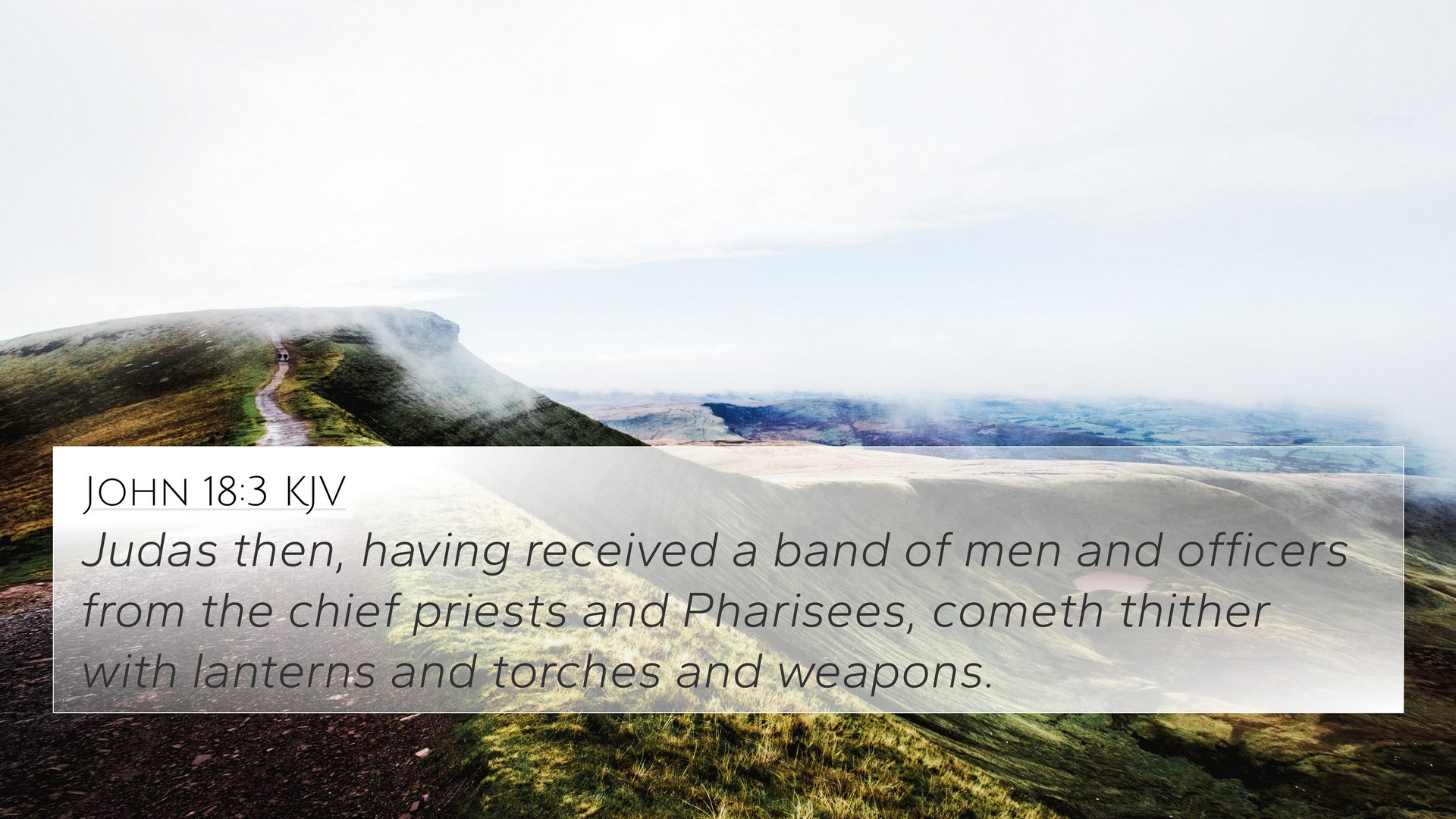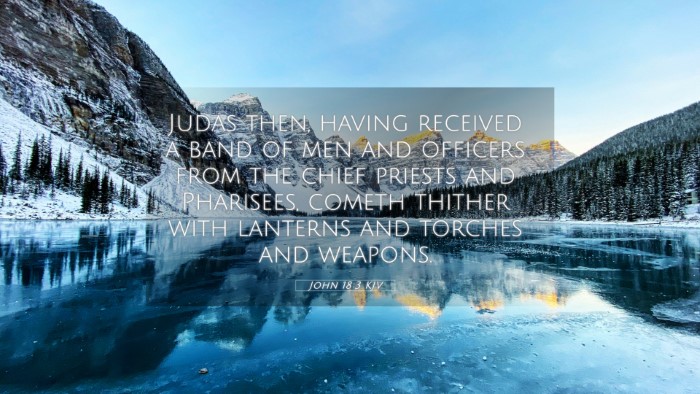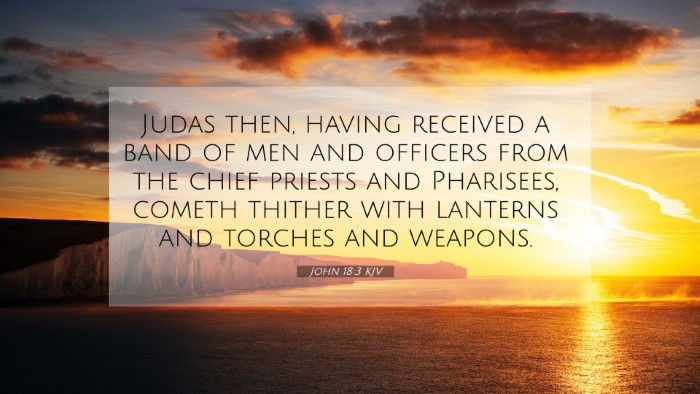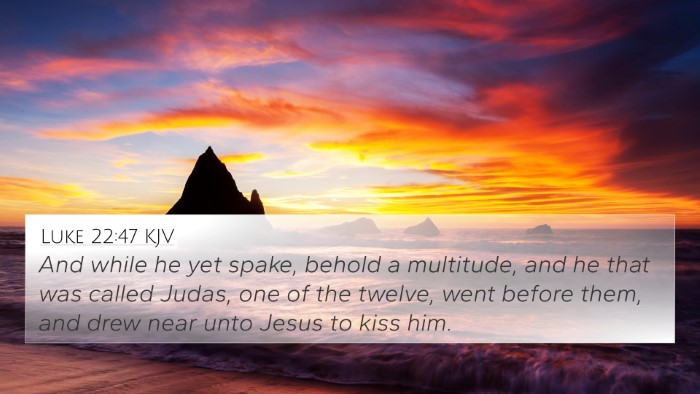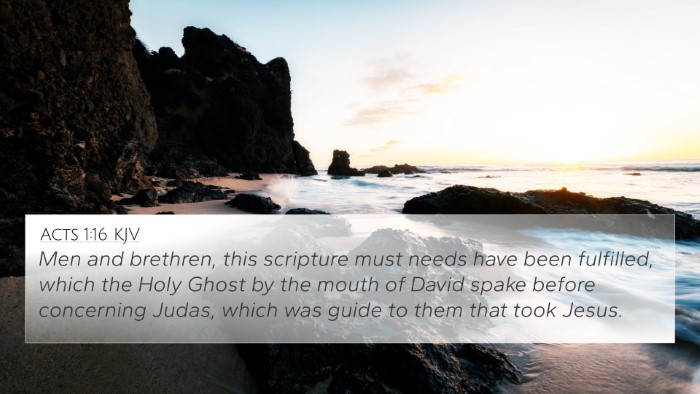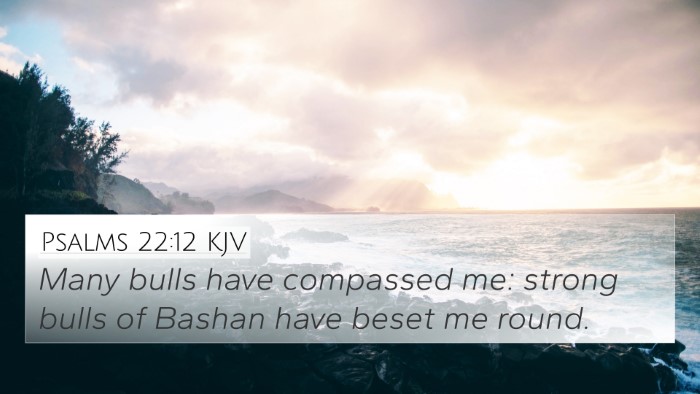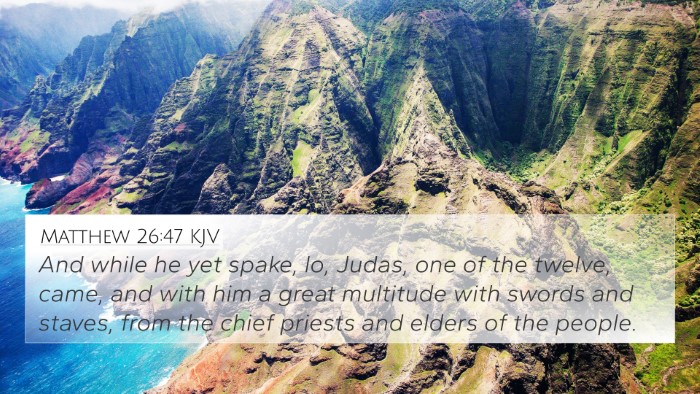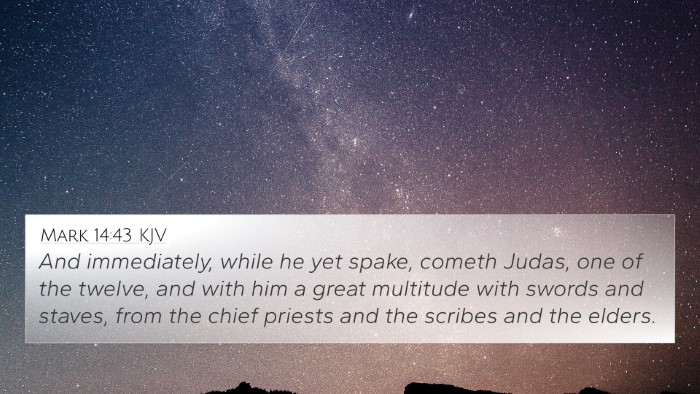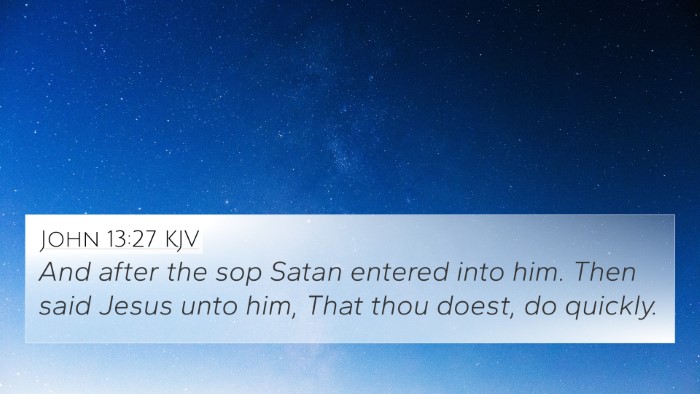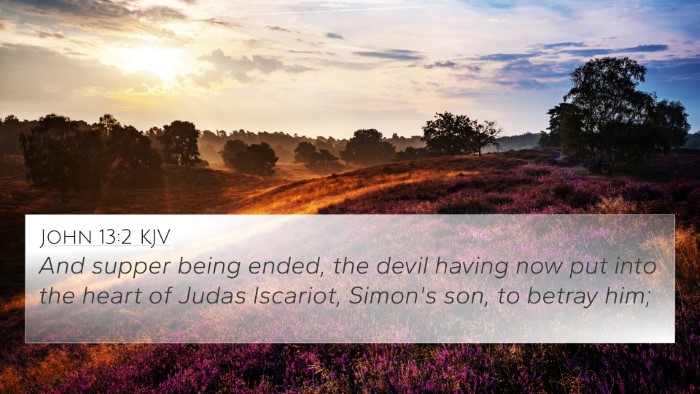Understanding John 18:3: Insights from Public Domain Commentaries
John 18:3 states: "Judas, then, having received a band of men and officers from the chief priests and Pharisees, came thither with lanterns and torches and weapons." This pivotal verse sets the stage for the arrest of Jesus, illustrating the earnestness of the authorities as they seek to apprehend Him. Below, we explore the meanings and connections drawn from various public domain commentaries.
Context and Background
In this narrative, Judas Iscariot is portrayed as the traitor who leads a contingent of soldiers and officials to confront Jesus. He had previously arranged to betray Jesus to the Jewish leaders, and this moment captures a scene of betrayal and hostility.
Matthew Henry's Commentary
Matthew Henry emphasizes the treachery of Judas and highlights the darkness of the human heart when greed and malice are involved. He points out that Judas comes with a “band of men”, signifying both a military presence and the seriousness of the charge against Jesus. The use of “lanterns and torches” symbolizes the spiritual darkness that surrounds the Abandonment of truth in pursuit of power.
Albert Barnes' Notes
Albert Barnes notes that the “band” could refer to a Roman cohort. This signifies that the Jewish leaders were not only relying on their authority but also seeking military power to ensure the arrest of Jesus. Barnes draws attention to the symbolism of light and darkness in this moment, suggesting that while they came with physical light, their actions reflected their moral blindness.
Adam Clarke's Commentary
Adam Clarke offers an in-depth analysis of the term “torches”, which signifies that the officers prepared for a lengthy search and perhaps intended to intimidate Jesus. Clarke conveys that this event marks a dramatic climax in the Gospel narrative, showcasing how human schemes attempt to overcome divine purpose.
Thematic Connections and Cross-References
The themes woven into John 18:3 resonate with numerous biblical texts. Below are cross-references that shed light on the overarching narrative of betrayal, light versus darkness, and divine purpose amidst human opposition:
- Matthew 26:14-16: Judas' betrayal is foretold, showing the premeditated nature of his actions.
- Luke 22:47-48: Further details the moment of betrayal with Judas' kiss.
- John 13:2: Highlights the devil having put it in Judas' heart to betray Jesus.
- Isaiah 53:3: Prophetic insight into Jesus being despised and rejected by men.
- Psalm 2:1-3: Discusses the nations conspiring against the Lord and His Anointed.
- John 3:19: Explains the condemnation of those who love darkness rather than light.
- Matthew 5:14-16: Encourages believers to be lights in the world, contrasting with the darkness of the night of Jesus' arrest.
- Ephesians 5:8-14: Discusses light and darkness, urging believers to walk in light as opposed to the works of darkness.
- Mark 14:43-46: Details the arrest and conveys a sense of urgency and hostility from the authorities.
- Acts 3:14-15: Peter boldly juxtaposes the innocent suffering of Jesus against the actions of His betrayers.
Exploring the Deeper Meanings
From these commentaries and connections, it is evident that John 18:3 resonates deeply within the thematic structure of the New Testament. The use of “lanterns” and “weapons” symbolizes not only the physical tools of arrest but also the spiritual bankruptcy of the leaders who sought to silence the truth. This pivotal moment leads into the larger narrative of Jesus' crucifixion, where His light confronts the darkness of humanity.
Application for Today
As we examine John 18:3 and its surrounding commentaries, readers are encouraged to reflect on the implications of betrayal, the conflict of light versus darkness, and the importance of standing firm in one’s faith amidst opposition. The multifaceted themes present in this verse remind us of the ongoing struggle between good and evil, and the affirmation that light ultimately prevails through Christ.
Tools for Further Study
To dive deeper into the analysis of Bible verses and their connections, consider utilizing:
- Bible Concordance: A reference tool for finding where specific words and concepts appear across the Scriptures.
- Bible Cross-Reference Guide: Helps in identifying related verses for thematic studies.
- Cross-References for Sermon Preparation: Ideal for pastors and teachers seeking a deeper understanding for messages.
- Bible Reference Resources: Explore various tools and commentaries to enrich your study.
- Cross-Referencing Methods: Practical strategies for studying connections between verses.
Conclusion
John 18:3 serves as a critical juncture in the Gospels, representing betrayal, darkness, and the foreboding of the sacrifice of Jesus. By utilizing cross-references and insights from established commentaries, readers can achieve a comprehensive understanding of the text, drawing connections that enhance the richness of Scripture. Embracing both the historical context and the spiritual lessons unlocks the profound truths found within the Bible.
